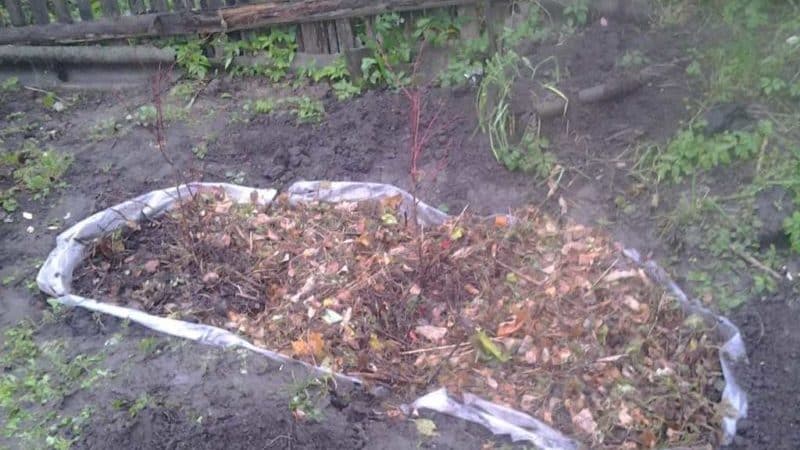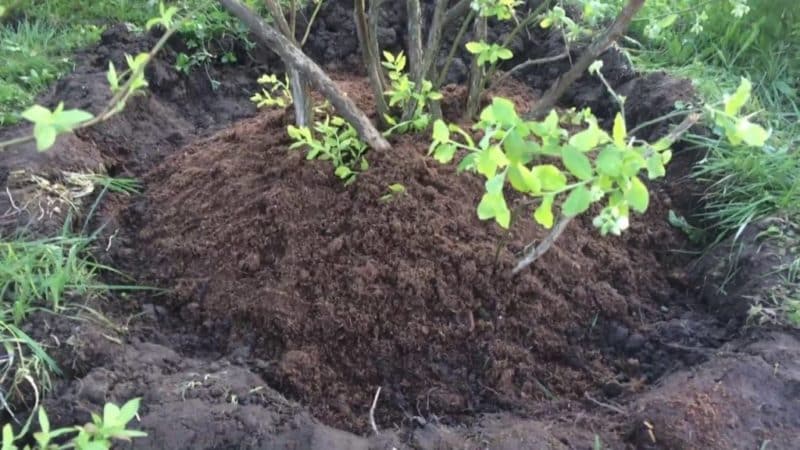Step-by-step instructions for transplanting blueberries to a new location in spring
Blueberry bushes with healthy berries and glossy green leaves are a real decoration of the site. If you already have blueberries in your garden, but they don’t bear fruit well or have grown too large, then you should transplant the bushes to a new place.
Proper timing of plant transfer is critical. Next, you will learn when and how to transplant garden blueberries from one place to another.
Reasons for transplantation

The reasons for searching for a new place for culture vary. Let's list the main ones:
- For the purpose of propagation of the variety you like. For this purpose, in particular, cuttings with semi-lignified shoots or propagation by layering are used. In this case, young plants are first planted in a separate bed or in a greenhouse, and upon reaching 2 years of age they are transplanted to a permanent place.
- An overgrown bush does not have enough space and needs to be divided. In this case, the plant is dug up and part of the stems with roots are separated, which are then transferred to a new location.
- Redevelopment of the site. If construction is planned in place of the bush, another plant will be planted, or if a structure or fence shades the bush and prevents it from growing.
- Replanting to renew the bush. Over time, the soil that nourishes the plant is depleted and this negatively affects the growth and fruiting of the crop. Such a transplant is carried out once every 10-12 years.
It also happens that fruit trees and trees that have grown around begin to shade the blueberries, preventing them from fully developing.In this case, the bush must be moved to a sunnier area.
Important. The older the plant, the more difficult it is for it to take root in a new place. It is best to replant young plants 2-3 years old.
Deadlines

To transplant blueberries, as well as other garden shrubs, it is important to choose the right time to replant the crop.
The choice of season is influenced by the climatic conditions of the region. In the north, autumn frosts come early, and a bush transplanted during this period may freeze before it has time to take root. And blueberries grown in the south wake up early in the spring, so it’s easy to miss the right time for the procedure.
Attention. Spring is the right time to transplant blueberries in the northern regions. And in the south it is preferable to transfer the plant in the fall.
Blueberries are transplanted to a new location in the spring when the bush is dormant. April is considered the most favorable month. The plant has not yet woken up at this time, and the soil is still well moistened and at the same time sufficiently warmed up (at least +5°C).
During the growing season (after awakening in the spring and summer), blueberries use energy for active growth. Violation of the root system during the growing season and fruiting causes stress in the plant. After all, when digging, a large percentage of small roots that absorb moisture and nutrients are cut off.
This is interesting:
Step-by-step instructions for pruning blueberries in spring for beginner gardeners
What is the difference between blueberries and honeysuckle - how to distinguish them
Choosing a new place

When deciding on the new location of the bushes, the following important factors are taken into account:
- good lighting of the place;
- protection from cold winds (for example, you can place bushes next to a fence or building wall);
- fertile soil with a high content of organic matter and good drainage;
- sufficient acidity of the soil (blueberries love acidic soil with a pH of 4.2 to 5).
Precursor plants
Favorable precursors for berry bushes are mixtures of leguminous and cereal grasses, honey-bearing green manures (mustard, phacelia, lupine, sweet clover), legumes (peas and beans), root crops (carrots, radishes, turnips, turnips, radishes, beets), pumpkin crops ( cucumber, pumpkin, squash, zucchini), as well as onions, garlic, dill, cumin, potatoes.
It is undesirable to use plants that reproduce by tubers, bulbs, rhizomes (tulips, stachys, horseradish, etc.) as predecessors for perennial plantings, because even with careful weeding, some of these plants remain in the soil.
Transplant technology

Blueberries have small, fibrous roots that extend around the plant like a pancake. For this reason, the shrub is easy to replant.
Before you start digging, make sure that the bush is dormant (the tips of the branches are dry and brittle). First, the plant is dug around the base. Then carefully use a shovel to pry up the earthen ball, trying to damage as few roots as possible.
If the new planting hole is already ready, then the bush is moved immediately. If not, then wrap the earthen ball in polyethylene to keep the earth moist and remove the plants away from the wind. Ideally, move blueberries to a new location as quickly as possible after removing them from the ground.
If you are planting more than one bush, plan in advance where each will be placed.
The transplant technology includes the following steps:
- Preparing the pit.The depth of each hole is 25-35 cm (depending on the size of the roots of each plant), the diameter is 2-3 times larger than the rhizome. The base of the hole is filled with a mixture of soil and peat so that the plants have a loose substrate rich in nutrients.
- Transferring the bush to the hole. The plant is placed in the hole and checked whether the stem reaches ground level. If not, add more nutrient soil mixture. It is taken into account that the soil will settle after watering.
- Filling the hole. As soon as the bush is at the desired height in the hole, the space around is covered with earth until the hole is completely filled.
- Mulching. The top layer of soil is sprinkled with pine needles, dry leaves, wood chips, and sawdust. The layer thickness is at least 5 cm. This will not only help retain moisture in the soil, but will also increase its acidity, which is good for blueberries.
- Watering. To complete the process, the soil around the base of the plant is lightly compacted and the bush is thoroughly watered.
Subsequently, watering is carried out every 2-3 days in dry and hot weather or once a week if it is cool, until the plant takes root.
Care after transplant

Newly planted or transplanted blueberry bushes are demanding of soil moisture. While the root system is recovering after moving to a new location, it is necessary to ensure that the soil remains moist at all times.
If the weather is damp and rainy, then the condition of the top layer of soil is checked once a week. If it is dry and hot - once every 2-3 days.
3-4 weeks after the blueberries have taken root in the new place, fertilize with acidic fertilizers. For example, sulfate preparations - they acidify the soil (80 g of ammonium sulfate or 50 g of ammonium nitrate per bush). But blueberries don’t like organics.
This is interesting:
How to properly replant a lemon at home
Instructions for transplanting honeysuckle to a new place in stages
When and how to properly transplant grapes to another place in the fall
Conclusion
Thus, both young blueberry bushes and old plants are replanted for the purpose of rejuvenation. A new location is chosen in a sunny area, protected from the winds, while paying attention to the acidity of the soil. Transfer to a new location is carried out in early spring or early autumn. Transplanting during the dormant season allows blueberries to recover before the next growing season.